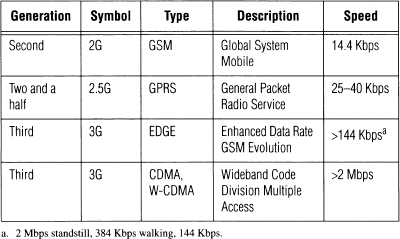Chapter 6
Power Management of Ultraportable Devices
6.1 Power Management of Wireless Computing and Communications Devices
Cellular telephone technology is one of the best success stories of recent years for its ability to keep the user working untethered for the entire day, with a single overnight recharge. The ultimate vision for this technology is the smart phone, which would have the advanced functionality of a handheld computing device, a digital still camera, a global positioning system, a music player, a portable television set, a mobile phone, and more in a convergent device. Reaching such a level of functionality without compromising the usage model will present enormous challenges as well as opportunities for the electronics industry and in particular for power management.
The Wireless Landscape
The wireless landscape is, and will remain for many years, very fragmented along both geographical and communications standards lines.
Three generations of digital cellular technologies—second (2G), third (3G), and in-between (2.5G)—already coexist (see Table 6-1).
Japan is ahead of the pack with 3G (W-CDMA and CDMA2000 flavors), while as I write the United States is building the infrastructure to provide 2.5G technology. Europe and Asia are somewhere in between.
Table 6-1 Common Cellular Standards

The Japanese typically do not own home computers and rely increasingly on their phones ...
Get Managing Power Electronics: VLSI and DSP-Driven Computer Systems now with the O’Reilly learning platform.
O’Reilly members experience books, live events, courses curated by job role, and more from O’Reilly and nearly 200 top publishers.

